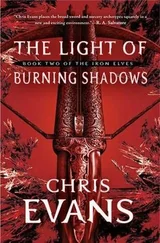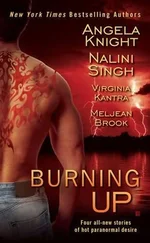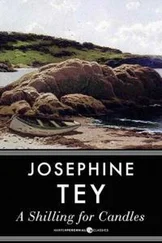The loony woodpecker winked at me, double-drummed the trunk of the tree, and then cackled
Haha—hahaha! Haha—hahaha!
I dropped the book as if it were afire. The woodpecker’s cackle ended abruptly in an offended squawk. The sounds were very like those of Woody Woodpecker, but harsher and more mournful.
Listen to the book.
Cautiously, I picked it up again and let it flop open.
A cartoon parakeet looked up from the page. The cartoonist had turned the yellow feathers of the parakeet’s crown into a handkerchief wrapped around its head, and patched one eye piratically. The fluffy green feathers on its legs billowed into voluminous pirate’s pants, tied about the waist with a string. It was identified as
Papaw Parakeet
conuropsis nocanfindus
The parrot screamed
Kee-ho! Keck-keck-kee!
I slammed the book closed between my palms. As with the woodpecker, the bird’s call ended in an insulted squawk, in a much higher pitch.
I was listening to the book, but it was so bizarre, I could hardly give thought to what I was hearing.
I let it fall open a third time. It was a pigeon cartooned this time, in a threadbare morning coat with tails and a hobo’s bindle under its wing. Its name was given as
Nestor Pigeon
ectopistes gonebyebye
The bird did not so much sing as fret
Wherewherewherewhere?
I stuck my tongue out at the cartoon pigeon. It pursed its beak—a cartoon bird can do that—and gave me a raspberry.
I closed the book and then opened it quickly, as if to catch the contents on the change.
The cartoon that looked up at me was of a Scarlet Macaw. It wore the traces of a harness.
Calley the Scarlet Macaw
ara macao calliope
Cosima, it rasped. Cosima, Calley want a cracker. Calley want a cracker.
The voice of this bird, I thought, was a real bird’s voice. I shut the book gently, as if lowering a shade over a birdcage.
The book held tight in my sweaty, frustrated grasp. If it had something more to say, I wasn’t at all sure that I wanted to listen to it. After a moment’s fidget, I let the book fall open once more.
The cartoon on the page was of myself, with my ears exaggerated into wings. It was labeled:
Calliope Carroll Dakin
calliope clairaudientius
Calliope—Kalliope—is a Greek word; clairaudient, half-French, half-Latin. It was easy enough for me to understand. I had taken Latin as much for its use in taxonomy as for the foundation that it provided for all the other Romance languages, and English, and intended to take Greek as soon as I had access to instruction. But I did not need a spurious Greco-Franco-Latin tag to name myself, or my nature.
I waited. The bird’s beak parted slightly and out came, whispered in my daddy’s voice:
You are my sunshine
Tears ran down my face and I choked out a single sob.
Closing the book again, grasping the spine tight between the thumb and fingers of my left hand, I fanned the pages. I expected the faint breath of the pages on my face. Instead, there was an organ chord.
And from the closed book, in the voices of the cartooned birds that were pictured within, came a funereal hymn.
In the sweet by and by,
We shall meet on that beautiful shore;
In the sweet by and by,
We shall meet on that beautiful shore.
We shall sing on that beautiful shore
The glorious songs that are lost;
And our spirits shall sorrow no more,
Nor sigh for the species unwrought.
By the dark of the moon
We shall rise on that beautiful shore
From the ashes and ruin
On great fiery wings shall we soar.
Squawwwk!
So endeth the reading, or the listening.
It was all so utterly nutty that I had to restrain myself from jumping up and pitching the book into the waters of the Gulf.
The pieces of the puzzle were in my head, however, and I could not help pushing them about.
Hope Carroll was the name of one of Mama’s sisters, my aunts, the ones Mamadee had given up to my great-grandmama. I knew nothing more of her than she had had a sister, Faith.
What was I to extract from all this oddybone sass? The cartooned birds—caricatures of the ivory-billed woodpecker, the Carolina parakeet, the passenger pigeon—were of species known or feared to be extinct. The altered wording of the hymn first discouraged hope and then implied resurrection or rebirth. The phoenix, rising from its own ashes. Which told me exactly what? Nothing that my poor bird brain could sort out. That I was one of the last of the species? Scarlet Macaws weren’t near-extinct. And they weren’t North American birds either.
Despairing of comprehension, I tucked the book back into my overall pocket, and stubbed my fingertips on the egg locket at the bottom.
“I’m psycho,” I told myself aloud. “Schizo. Somebody lock me up.”
Calley the Scarlet Macaw
ara macao calliope
The Scarlet Macaw’s name was Calliope, Calley, for short. She had been my great-grandmama’s own bird. Mama had named me after her grandmama’s pet macaw.
I might have laughed, had I not been knuckling tears from my face.
At least Cosima had loved her Calliope, or she would not have attached the egg locket to Calliope’s harness.
As I emerged from the grasses, a darkness against the distance coalesced into the figure of a human being. I slipped down the dune onto the beach. A few steps confirmed my immediate suspicion: Mrs. Mank was walking south on the sand. As broad as the beach was, we were the only two people on it and there was no way I could avoid her.
After years of not being sure how I felt, I knew then that I did not like Mrs. Mank, but I did want the education that she was offering, and I did not know how to get it on my own.
Mrs. Mank was dressed as informally as I ever saw her (until she was dying), in sandals, clamdiggers and a middy. In splendid oxymoronic defiance of their purpose, the clamdiggers had a parade-ground crease in them. Every stitch she wore was hand-tailored and looked it. I couldn’t say what unborn animal had been sacrificed to make the fragile leather for her sandals, but it was likely the last one of whatever it was. She wore dark glasses but no hat and the rising sun highlighted her hair that was no less and no more silvery than it ever had been.
When she reached me, her hand fell directly over my right forearm, which was still more than a little numb from electrical shock. The low sun behind her made a corona around her, bright enough to make me squint.
“Calley, walk with me.”
My legs were longer than hers, and I was a few inches taller, forcing me to shorten my pace to match hers.
“You’re going to be six feet tall,” she said, as if I were a prize ficus plant. She gave me an arch look. “If you stay here any longer, I fear you will become pot-bound.”
“That would be a metaphor.”
“So the local school has taught you something.”
“I hope so, ma’am.”
“What’s that great lump in your pocket? A book?”
“A bird guide.”
“Which one. Let me see it.”
Reluctantly, I gave it up.
The spine read:
National Audubon Society
Field Guide to
Eastern Land Birds
“This is ancient,” she declared. “Don’t you have a more recent edition?”
“Yes, ma’am. If I get this one wet or sandy, it’s no loss.”
The skepticism lingered in her face. Her elegantly manicured nails pried at the covers, but the covers seemed to resist. Her eyebrows veed in surprise.
“It’s gotten wet so many times,” I said, trying not to show my utter terror that she would either succeed in opening it or else throw it into the Gulf, “the pages stick together.”
Читать дальше












